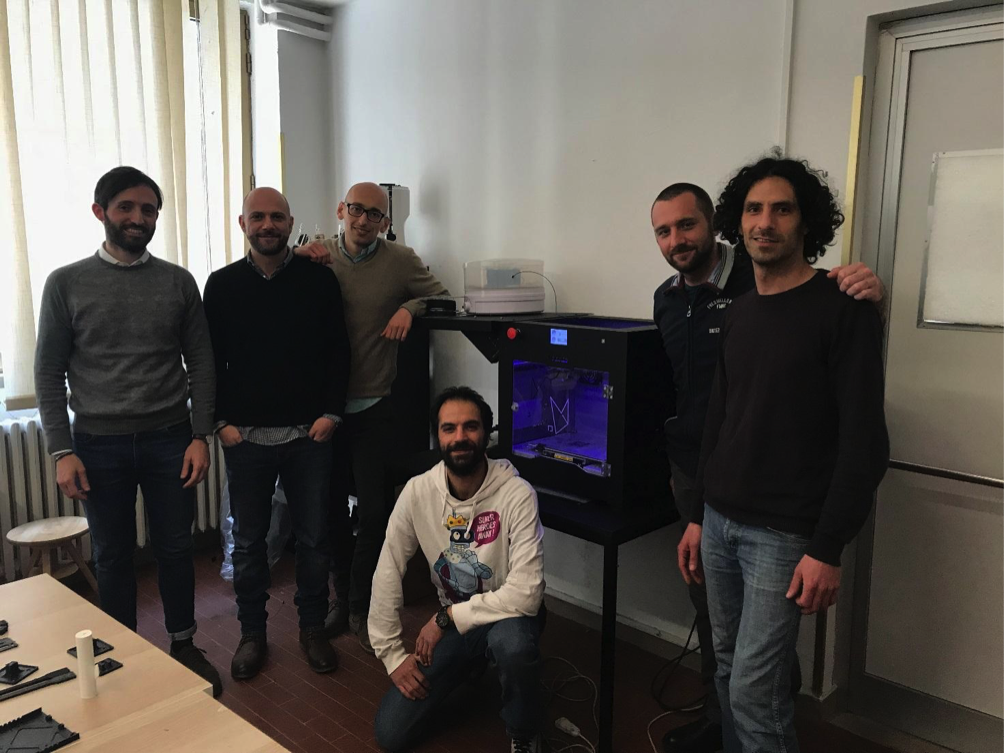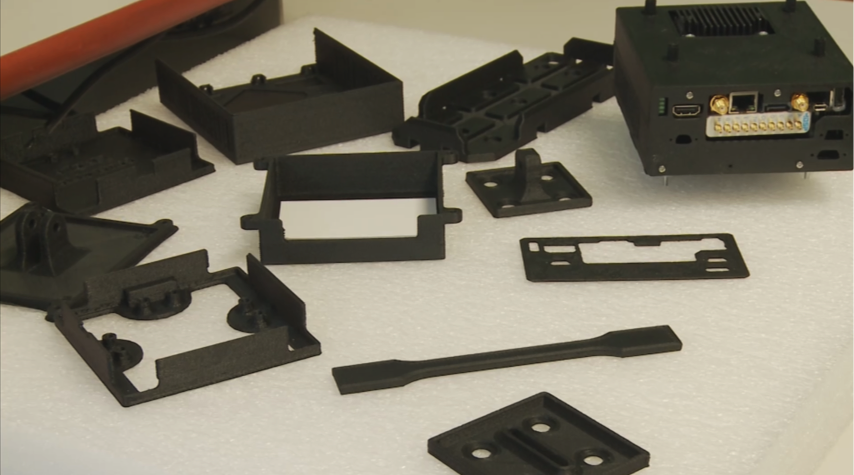SkyBox Engineering, an aerospace research and development spin-off from the University of Pisa, has collaborated with Italian 3D printer manufacturer Roboze to produce functional parts for a drone.
Using a FFF Roboze 3D printer, SkyBox was able to manufacture a system of dampers for the autopilot of the drone, which helps to negate the high frequency vibrations caused by the motors. Produced using carbon fiber-filled polyamide (Carbon PA) material, the 3D printed parts achieved a significant time and weight reduction for SkyBox compared to traditional manufacturing methods.
“The necessity of using 3D printing results from the nature of our projects”, comments Vincenzo Binante, Engineer at SkyBox. “The main goal is the reduction of weights and encumbrances of the parts that are positioned on drones and aero models, getting advantage of the possibility to build functional parts with even complex shape”.
“We chose Roboze for the quality of the material and the chance to test different printing processes: moreover, Roboze solution allows to have a protected and controlled build plate with a good precision and to get confident with the printer extremely quickly”.

Roboze 3D printing saves weight and time
SkyBox was founded in 2009 by a group of researchers from the Aerospace Engineering Department of Pisa University. Its research activities in the aerospace industry focus on developing new tools and design methodologies, applied in order to provide customers with innovative solutions and improvements on existing aeronautical products.
In this particular case study, SkyBox applied the 3D printing technologies of Roboze to update the design methodologies and prototyping of its drone models. The research group was able to 3D print housing for the drone equipped with the dampers which enabled a weight reduction of 25 percent. Furthermore, the team could modify the joint of the housing with very quickly with 3D printing, reducing the overall time of production by 20 percent. The savings achieved could not be possible by producing the parts in aluminum using machine tools, according to Binante: “The Roboze solution permitted to definitely speed up the prototyping process, as allows a more direct transfer from the CAD model to the realization of the part, compared to the traditional manufacturing methods.”
The reduction in both lead time and weight for producing the drone parts was enabled by Roboze’s patented Beltless system and Carbon PA material. The Beltless technology featured on Roboze’s 3D printers uses racks and helical pinions made from tempered steel to achieve precise 25-micron mechanical tolerances. SkyBox capitalized on the capabilities of Roboze’s Beltless technology to improve the repeatability of the 3D printed parts. Moreover, Carbon PA a tensile strength of 138MPa, and is posited by Roboze to be as “Strong as Metal, Light as Polymer”, making it ideal for metal replacement applications. SkyBox therefore used Carbon PA in combination with Roboze 3D printing to produce the composite drone parts with reduced weight compared to metal alloys.

Upgrading the Beltless system
In May 2019, Roboze showcased its high temperature Roboze Xtreme series for the first time in North America at RAPID+TCT 2019. Including both the Roboze One Xtreme and Roboze One+400 Xtreme, the new systems were created to bridge the gap between Roboze’s production additive manufacturing system, the Argo 500, and desktop-sized 3D printers, the Roboze One and Roboze One+400. The Xtreme series features an upgrade on the company’s Beltless system, providing increased precision and corrosion resistance compared to previous systems.
Recently, Roboze partnered with Neofab, a 3D printing consultancy business based in Le Mans, France. The aim of the partnership for Roboze was to extend its presence in Europe, in order to address the growing demand for additive manufacturing production in France.
Subscribe to the 3D Printing Industry newsletter for the latest news in additive manufacturing. You can also keep connected by following us on Twitter and liking us on Facebook.
Looking for a career in additive manufacturing? Visit 3D Printing Jobs for a selection of roles in the industry.
Featured image shows drone components 3D printed using Carbon PA. Photo via Roboze.


